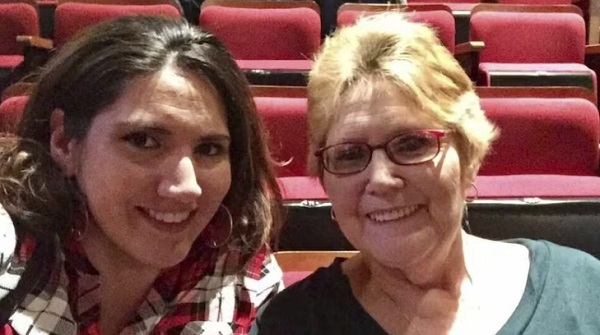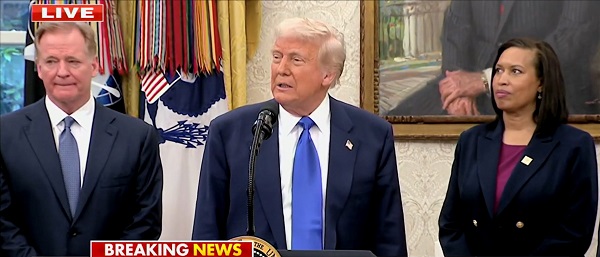Health
How gender activists stole the media, distorted medicine, and hurt Canadian kids:

 By Mia Hughes for Inside Policy
By Mia Hughes for Inside Policy
News outlets abandoned balanced reporting on medical transitions for minors long ago
There is a major medical scandal unfolding in Canada, and our media is fueling it. In gender clinics across the country, doctors put healthy adolescents on invasive medical procedures that can impair fertility, sexual function, and bone density, damage bodily systems, and result in the removal of healthy organs. Teenage girls are being put into menopause, and young men are being chemically and surgically castrated. This is all done without a clear diagnosis or solid scientific evidence that these treatments are safe or beneficial.
Yet Canada’s mainstream media portrays these interventions, euphemistically called “gender-affirming care,” as evidence-based, medically necessary, and lifesaving. Top outlets such as CBC, CTV, and Global present paediatric gender medicine as uncontroversial.
Flawed Coverage Putting Canada’s Youth at Risk
The scandal of paediatric gender medicine contains all the elements of a sensational news story – conspiracy, intrigue, deception, and blackmail. It involves powerful institutions suppressing dissent, whistleblowers risking their careers to speak out, and innocent young people being harmed in the crossfire. There are medical professionals ignoring basic ethical principles, activists influencing policy under the guise of science, and victims being vilified and silenced. All this should prove irresistible to the inquisitive journalistic mind.
Which makes it all the more puzzling that, aside from the National Post, Canada’s mainstream media has opted to ignore the story and instead act as a mouthpiece for extremist trans activists, uncritically echoing their talking points. To understand how harmful and inaccurate the mainstream coverage of this issue is, it is essential to debunk the key claims of the trans activist lobby.
Let’s start with puberty blockers as a fully reversible pause. CBC first reported this claim in 2012, when the puberty suppression experiment was still in its infancy, then it pops up consistently throughout the intervening years, all the way up to the present day and the network’s dismal coverage of England’s Cass Report in 2024. CBC also feeds this misinformation directly to children in a CBC Kids article from 2023.
CTV, Global, the Globe and Mail, and others are equally guilty of spreading this inaccuracy to the public. It is understandable that many Canadians believe puberty blockers are a fully reversible pause and that therefore restricting access to these drugs is unnecessary government overreach. The trouble is the claim is false.
In truth, before Dutch researchers introduced puberty suppression for trans-identified adolescents, studies showed that 63 per cent to 98 per cent of youth eventually outgrew their gender distress. However, once puberty blockers were implemented, nearly all adolescents progressed to irreversible cross-sex hormones, with persistence rates of 98 per cent to 100 per cent. The explanation for this striking reversal of persistence rates is that the cognitive and sexual development that occurs during puberty naturally resolves gender dysphoria in most cases. Blocking puberty, therefore, means blocking the natural cure for gender-related distress.
Yet our mainstream media continues to call puberty blockers reversible because Canada’s “experts” in “gender-affirming care” continue to cling to this belief, despite the mounds of scientific evidence to the contrary. It is the same for the claim that affirming a young person’s transgender identity and providing access to puberty blockers, cross-sex hormones, and surgeries amounts to “life-saving care.” The most pernicious of all trans activist misinformation, the transition-or-suicide narrative is ubiquitous in Canada’s mainstream coverage of this controversial medical treatment.
There are many examples. The most reprehensible is in the CBC Kids piece, in which a young trans-identified person is quoted as saying, “If I wasn’t able to start this therapy, honestly, I probably wouldn’t be here anymore.” This content directly contradicts suicide prevention guidelines, which emphasize that the media must never oversimplify or attribute suicide to a single cause because suicide is known to be socially contagious.
The truth is the transition-or-suicide claim rests on exceptionally flimsy scientific evidence. Surveys of trans-identified youth do show increased risk of suicidal thoughts and suicide attempts, but completed suicide in this population is rare. The elevated risk is likely due to co-existing mental health issues that are extremely common in youth who identify as transgender. All systematic reviews to date have found no good quality evidence to support the transition-or-suicide narrative, and the Cass Report and a recent robust study out of Finland reached the same conclusion.
The final most common falsehood repeated by our top news outlets is that very few people regret undergoing these hormonal and surgical procedures. This appears regularly in articles on the subject. Once again, this falsehood appears in the same CBC Kids article, in which children are told that regret is experienced by only “around one per cent of all patients who received gender-affirming surgery, according to a review of 27 studies.” (Of note, the review cited by CBC is among the most poorly conducted study in a field already known for exceptionally low standards, leading one exasperated critic of the paper to ask, “where exactly is the line between incompetence and fraud?”)
These falsehoods remain ever-present in Canada’s reporting on paediatric gender medicine because our journalists have misplaced trust in medical associations, most notably the World Professional Association for Transgender Health (WPATH). WPATH, an activist group masquerading as a medical association, has been thoroughly discredited in recent years, but these revelations have failed to penetrate the Canadian media landscape.
Even more remarkably, it is not only the media who were duped by WPATH. Almost every major medical association in North America, including the Canadian Paediatric Society, follows the lead of this fraudulent activist group that sets standards of care based on flimsy science, buries evidence that does not align with its political goals, and believes “eunuch” is a valid gender identity even children can possess.
The WPATH Files, released in March 2024, revealed professionals within WPATH, including a prominent Canadian endocrinologist, are aware that children and adolescents are not capable of understanding the lifelong implications of puberty suppression, that there is significant regret among this cohort, and that gender-affirming clinicians are conducting an unregulated experiment on people who identify as transgender.
How Activists Shaped the Narrative
In October 2011, CBC’s The Passionate Eye aired a documentary titled Transgender Kids. The four children featured in the film were some of the earliest participants in the puberty suppression experiment and the filmmakers compassionately tackled some tough questions, such as how young is too young? And how should parents respond to their child’s desire for these extreme medical interventions?
This was the first time CBC had reported on “transgender children,” a brand-new type of human being only made possible by the puberty suppression experiment. What happened next very likely shaped the way the institution handled the issue going forward.
On January 27, 2012, Egale, which describes itself as a “2SLGBTQI+” charity, published an open letter accusing the CBC of “violence” towards “transgender children” due to repeated instances of misgendering in the documentary. According to Egale, “this significantly increases the likelihood that the viewing public will incorrectly view these children as victims of ‘gender confusion’ and their parents as horribly misguided.” The group demanded a public apology from CBC and recommended that the public broadcaster use the GLAAD media style guide going forward when reporting on trans issues.
Egale’s public response sent a clear warning to Canadian media: questioning whether children and adolescents could truly be transgender or make such life-altering decisions would not be tolerated. As a result, from the outset, activists tied the experiment to change the sex of children to a human rights cause, dictated the tone of media coverage, and effectively forbade genuine journalistic scrutiny of these invasive medical procedures.
The highly publicized suicide of trans-identified teen Leelah Alcorn in 2014 injected the “transition-or-suicide” myth into the Canadian mainstream narrative. Trans activists seized on Alcorn’s suicide note as supposed proof that affirmation and medical interventions saved lives, and from that moment on, our news outlets led parents to believe that questioning their child’s sudden transgender identity or desire for irreversible hormones and surgeries could have fatal consequences.
Having learned its lesson five years previously, in 2017, CBC pulled a second documentary called Transgender Kids: Who Knows Best before it aired after “over a dozen” complaints from Canadian trans activists. The activists claimed the documentary was “harmful, would “disseminate inaccurate information about trans youth and gender dysphoria,” and would “feed transphobia.”
In reality, the documentary was fair and measured. It contained all the standard trans activist talking points but also presented the opposing perspective. It featured Dr. Kenneth Zucker, who highlighted the historically high desistance rates before the introduction of puberty blockers and pointed out that many children experiencing gender distress would likely grow up to be gay.
This is what journalism is meant to do: present the full picture. But in a media landscape dominated by trans activists, news outlets abandoned balanced reporting.
A Lesson from the Past
In May 1941, the Saturday Evening Post published an article with the headline “Turning the Mind Inside Out.” In it, Waldemar Kaempffert, an editor of the New York Times, described a miraculous new brain surgery called a lobotomy that cut “worries, persecution complexes, suicidal intentions, obsessions, indecisiveness and nervous tensions” out of the mind. Kaempffert compared the procedure that involved blindly swinging knives inside a patient’s brain to the delicate work of a watchmaker.
Kaempffert’s article was just one of many glowing media endorsements of what would become one of medicine’s greatest atrocities. With each published piece, word spread, offering desperate families a false sense of hope. Encouraged by the promise of a “cure,” relatives sought lobotomies for their loved ones – including, most famously, the Kennedys, who, in the same year as Kaempffert’s article, subjected their daughter Rosemary to the procedure, with devastating consequences.
The misleading coverage of “gender-affirming care” has a similarly dangerous impact. First, each article reinforces the pseudoscientific notion that some children are transgender, embedding this idea into public consciousness and fueling the social contagion of adolescents adopting trans identities. Then, with every article that exaggerates the benefits of hormones and surgeries and downplays the harms, young people come to believe that this medical treatment is the solution to their pain. However, minors do not sign consent forms. That is the responsibility of parents.
Therefore, consider the real-world consequences of the falsehoods our journalists are propagating. Parents who rely on mainstream media may make disastrous decisions for their child based on ideologically driven narratives.
Glimmers of Courage
Amidst a sea of misinformation, there has been the occasional glimmer of courage. In 2021, CTV’s W5 produced a balanced segment showcasing the voices of detransitioners and asking whether there was adequate safeguarding in youth gender medicine.
In February 2024, Radio-Canada’s Enquête team produced a stunning piece of investigative journalism in which an actress posing as a trans-identified 14-year-old obtained a prescription for testosterone after just a nine-minute appointment at a private gender clinic in Quebec. In response, local trans activists smashed the windows of the Radio-Canada headquarters in Montreal. Then in April 2024, the Globe and Mail published a balanced and thoroughly researched opinion piece calling for a review of Canada’s approach to treating this vulnerable cohort.
CBC’s The National tackled the issue twice, approximately one year apart, and the second showed some measure of improvement in willingness to grapple with the complexity of the issue. However, this is nowhere near enough. These brief glimmers of hope are still drowned out in a sea of activist propaganda.
A Call to Action
One of the greatest challenges in exposing the scandal of paediatric gender medicine is that the truth is so shocking it defies belief. To the average person, it seems impossible that an entire medical field could be hijacked by an unscientific and irrational ideology – that endocrinologists could be chemically castrating healthy adolescents without solid scientific justification, that surgeons could be removing the healthy breasts of teenage girls without any proof of benefit, and that the World Professional Association for Transgender Health could have fraudulently duped the entire medical world into endorsing a reckless, ideology-driven experiment with no scientific underpinning. It sounds like a wild conspiracy theory. Yet every word is true.
Which means now more than ever, journalists must do their job – question, investigate, and expose the corruption of gender medicine. Skeptics need a platform, victims must be heard, and the harms must be scrutinized. Now is the time to plainly state that there is no evidence that “gender-affirming care” is lifesaving, puberty blockers are neither evidence-based nor reversible, and detransition rates are clearly rising. For over a decade, Canadian media have trusted activist-clinicians and the discredited WPATH while ignoring or vilifying those fighting to protect young people. This must end – immediately.
Mia Hughes specializes in pediatric gender medicine, psychiatric epidemics, social contagion and the intersection of trans rights and women’s rights. She is the author of “The WPATH Files” and a senior fellow at the Macdonald-Laurier Institute.
Addictions
Why B.C.’s new witnessed dosing guidelines are built to fail

Photo by Acceptable at English Wikipedia, ‘Two 1 mg pills of Hydromorphone, prescribed to me after surgery.’ [Licensed under CC BY-SA 3.0, via Wikimedia Commons]
By Alexandra Keeler
B.C. released new witnessed dosing guidelines for safer supply opioids. Experts say they are vague, loose and toothless
This February, B.C pledged to reintroduce witnessed dosing to its controversial safer supply program.
Safer supply programs provide prescription opioids to people who use drugs. Witnessed dosing requires patients to consume those prescribed opioids under the supervision of a health-care professional, rather than taking their drugs offsite.
The province said it was reintroducing witnessed dosing to “prevent the diversion of prescribed opioids and hold bad actors accountable.”
But experts are saying the government’s interim guidelines, released April 29, are fundamentally flawed.
“These guidelines — just as any guidelines for safer supply — do not align with addiction medicine best practices, period,” said Dr. Leonara Regenstreif, a primary care physician specializing in substance use disorders. Regenstreif is a founding member of Addiction Medicine Canada, an advocacy group that represents 23 addiction specialists.
Addiction physician Dr. Michael Lester, who is also a founding member of the group, goes further.
“Tweaking a treatment protocol that should not have been implemented in the first place without prior adequate study is not much of an advancement,” he said.
Witnessed dosing
Initially, B.C.’s safer supply program was generally administered through witnessed dosing. But in 2020, to facilitate access amidst pandemic restrictions, the province moved to “take-home dosing,” allowing patients to take their prescription opioids offsite.
After pandemic restrictions were lifted, the province did not initially return to witnessed dosing. Rather, it did so only recently, after a bombshell government report alleged more than 60 B.C. pharmacies were boosting sales by encouraging patients to fill unnecessary opioid prescriptions. This incentivized patients to sell their medications on the black market.
B.C.’s interim guidelines, developed by the BC Centre on Substance Use at the government’s request, now require all new safer supply patients to begin with witnessed dosing.
But for existing patients, the guidelines say prescribers have discretion to determine whether to require witnessed dosing. The guidelines define an existing patient as someone who was dispensed prescription opioids within the past 30 days.
The guidelines say exemptions to witnessed dosing are permitted under “extraordinary circumstances,” where witnessed dosing could destabilize the patient or where a prescriber uses “best clinical judgment” and determines diversion risk is “very low.”
Holes
Clinicians say the guidelines are deliberately vague.
Regenstreif described them as “wordy, deliberately confusing.” They enable prescribers to carry on as before, she says.
Lester agrees. Prescribers would be in compliance with these guidelines even if “none of their patients are transferred to witnessed dosing,” he said.
In his view, the guidelines will fail to meet their goal of curbing diversion.
And without witnessed dosing, diversion is nearly impossible to detect. “A patient can take one dose a day and sell seven — and this would be impossible to detect through urine testing,” Lester said.
He also says the guidelines do not remove the incentive for patients to sell their drugs to others. He cites estimates from Addiction Medicine Canada that clients can earn up to $20,000 annually by selling part of their prescribed supply.
“[Prescribed safer supply] can function as a form of basic income — except that the community is being flooded with addictive and dangerous opioids,” Lester said.
Regenstreif warns that patients who had been diverting may now receive unnecessarily high doses. “Now you’re going to give people a high dose of opioids who don’t take opioids,” she said.
She also says the guidelines leave out important details on adjusting doses for patients who do shift from take-home to witnessed dosing.
“If a doctor followed [the guidelines] to the word, and the patient followed it to the word, the patient would go into withdrawal,” she said.
The guidelines assume patients will swallow their pills under supervision, but many crush and inject them instead, Regenstreif says. Because swallowing is less potent, a higher dose may be needed.
“None of that is accounted for in this document,” she said.
Survival strategy
Some harm reduction advocates oppose a return to witnessed dosing, saying it will deter people from accessing a regulated drug supply.
Some also view diversion as a life-saving practice.
Diversion is “a harm reduction practice rooted in mutual aid,” says a 2022 document developed by the National Safer Supply Community of Practice, a group of clinicians and harm reduction advocates.
The group supports take-home dosing as part of a broader strategy to improve access to safer supply medications. In their document, they say barriers to accessing safer supply programs necessitate diversion among people who use drugs — and that the benefits of diversion outweigh the risks.
However, the risks — and harms — of diversion are mounting.
People can quickly develop a tolerance to “safer” opioids and then transition to more dangerous substances. Some B.C. teenagers have said the prescription opioid Dilaudid was a stepping stone to them using fentanyl. In some cases, diversion of these drugs has led to fatal overdoses.
More recently, a Nanaimo man was sentenced to prison for running a highly organized drug operation that trafficked diverted safer supply opioids. He exchanged fentanyl and other illicit drugs for prescription pills obtained from participants in B.C.’s safer supply program.
Recovery
Lester, of Addiction Medicine Canada, believes clinical discretion has gone too far. He says take-home dosing should be eliminated.
“Best practices in addiction medicine assume physicians prescribing is based on sound and thorough research, and ensuring that their prescribing does not cause harm to the broader community, as well as the patient,” he said.
“[Safer supply] for opioids fails in both these regards.”
He also says safer supply should only be offered as a short-term bridge to patients being started on proven treatments like buprenorphine or methadone, which help reduce drug cravings and manage withdrawal symptoms.
B.C.’s witnessed dosing guidelines say prescribers can discuss such treatment options with patients. However, the guidelines remain neutral on whether safer supply is intended as a transitional step toward longer-term treatment.
Regenstreif says this neutrality undermines care.
“[M]ost patients I’ve seen with opioid use disorder don’t want to have [this disorder],” she said. “They would rather be able to set goals and do other things.”
Oversight gaps
Currently, about 3,900 people in B.C. participate in the safer supply program — down from 5,200 in March 2023.
The B.C. government has not provided data on how many have been transitioned to witnessed dosing. Investigative journalist Rob Shaw recently reported that these data do not exist.
“The government … confirmed recently they don’t have any mechanism to track which ‘safe supply’ participants are witnessed and which [are] not,” said Elenore Sturko, a Conservative MLA for Surrey-Cloverdale, who has been a vocal critic of safer supply.
“Without a public report and accountability there can be no confidence.”
The BC Centre on Substance Use, which developed the interim guidelines, says it does not oversee policy decisions or data tracking. It referred Canadian Affairs’ questions to B.C.’s Ministry of Health, which has yet to clarify whether it will track and publish transition data. The ministry did not respond to requests for comment by deadline.
B.C. has also not indicated when or whether it will release final guidelines.
Regenstreif says the flawed guidelines mean many people may be misinformed, discouraged or unsupported when trying to reduce their drug use and recover.
“We’re not listening to people with lived experience of recovery,” she said.
This article was produced through the Breaking Needles Fellowship Program, which provided a grant to Canadian Affairs, a digital media outlet, to fund journalism exploring addiction and crime in Canada. Articles produced through the Fellowship are co-published by Break The Needle and Canadian Affairs.
Subscribe to Break The Needle
Brownstone Institute
Net Zero: The Mystery of the Falling Fertility

From the Brownstone Institute
By
If you want to argue that a mysterious factor X is responsible for the drop in fertility, you will have to explain (1) why the factor affected only the vaccinated, and (2) why it started affecting them at about the time of vaccination.
In January 2022, the number of children born in the Czech Republic suddenly decreased by about 10%. By the end of 2022, it had become clear that this was a signal: All the monthly numbers of newborns were mysteriously low.
In April 2023, I wrote a piece for a Czech investigative platform InFakta and suggested that this unexpected phenomenon might be connected to the aggressive vaccination campaign that had started approximately 9 months before the drop in natality. Denik N – a Czech equivalent of the New York Times – immediately came forward with a “devastating takedown” of my article, labeled me a liar and claimed that the pattern can be explained by demographics: There were fewer women in the population and they were getting older.
To compare fertility across countries (and time), the so-called Total Fertility Rate (TFR) is used. Roughly speaking, it is the average number of children that are born to a woman over her lifetime. TFR is independent of the number of women and of their age structure. Figure 1 below shows the evolution of TFR in several European countries between 2001 and 2023. I selected countries that experienced a similar drop in TFR in 2022 as the Czech Republic.

So, by the end of 2023, the following two points were clear:
- The drop in natality in the Czech Republic in 2022 could not be explained by demographic factors. Total fertility rate – which is independent of the number of women and their age structure – dropped sharply in 2022 and has been decreasing ever since. The data for 2024 show that the Czech TFR has decreased further to 1.37.
- Many other European countries experienced the same dramatic and unexpected decrease in fertility that started at the beginning of 2022. I have selected some of them for Figure 1 but there are more: The Netherlands, Norway, Slovakia, Slovenia, and Sweden. On the other hand, there are some countries that do not show a sudden drop in TFR, but rather a steady decline over a longer period (e.g. Belgium, France, UK, Greece, or Italy). Notable exceptions are Bulgaria, Spain, and Portugal where fertility has increased (albeit from very low numbers). The Human Fertility Project database has all the numbers.
This data pattern is so amazing and unexpected that even the mainstream media in Europe cannot avoid the problem completely. From time to time, talking heads with many academic titles appear and push one of the politically correct narratives: It’s Putin! (Spoiler alert: The war started in February 2022; however, children not born in 2022 were not conceived in 2021). It’s the inflation caused by Putin! (Sorry, that was even later). It’s the demographics! (Nope, see above, TFR is independent of the demographics).
Thus, the “v” word keeps creeping back into people’s minds and the Web’s Wild West is ripe with speculation. We decided not to speculate but to wrestle some more data from the Czech government. For many months, we were trying to acquire the number of newborns in each month, broken down by age and vaccination status of the mother. The post-socialist health-care system of our country is a double-edged sword: On one hand, the state collects much more data about citizens than an American would believe. On the other hand, we have an equivalent of the FOIA, and we are not afraid to use it. After many months of fruitless correspondence with the authorities, we turned to Jitka Chalankova – a Czech Ron Johnson in skirts – who finally managed to obtain an invaluable data sheet.
To my knowledge, the datasheet (now publicly available with an English translation here) is the only officially released dataset containing a breakdown of newborns by the Covid-19 vaccination status of the mother. We requested much more detailed data, but this is all we got. The data contains the number of births per month between January 2021 and December 2023 given by women (aged 18-39) who were vaccinated, i.e., had received at least one Covid vaccine dose by the date of delivery, and by women who were unvaccinated, i.e., had not received any dose of any Covid vaccine by the date of delivery.
Furthermore, the numbers of births per month by women vaccinated by one or more doses during pregnancy were provided. This enabled us to estimate the number of women who were vaccinated before conception. Then, we used open data on the Czech population structure by age, and open data on Covid vaccination by day, sex, and age.
Combining these three datasets, we were able to estimate the rates of successful conceptions (i.e., conceptions that led to births nine months later) by preconception vaccination status of the mother. Those interested in the technical details of the procedure may read Methods in the newly released paper. It is worth mentioning that the paper had been rejected without review in six high-ranking scientific journals. In Figure 2, we reprint the main finding of our analysis.

Figure 2 reveals several interesting patterns that I list here in order of importance:
- Vaccinated women conceived about a third fewer children than would be expected from their share of the population. Unvaccinated women conceived at about the same rate as all women before the pandemic. Thus, a strong association between Covid vaccination status and successful conceptions has been established.
- In the second half of 2021, there was a peak in the rate of conceptions of the unvaccinated (and a corresponding trough in the vaccinated). This points to rather intelligent behavior of Czech women, who – contrary to the official advice – probably avoided vaccination if they wanted to get pregnant. This concentrated the pregnancies in the unvaccinated group and produced the peak.
- In the first half of 2021, there was significant uncertainty in the estimates of the conception rates. The lower estimate of the conception rate in the vaccinated was produced by assuming that all women vaccinated (by at least one dose) during pregnancy were unvaccinated before conception. This was almost certainly true in the first half of 2021 because the vaccines were not available prior to 2021. The upper estimate was produced by assuming that all women vaccinated (by at least one dose) during pregnancy also received at least one dose before conception. This was probably closer to the truth in the second part of 2021. Thus, we think that the true conception rates for the vaccinated start close to the lower bound in early 2021 and end close to the upper bound in early 2022. Once again, we would like to be much more precise, but we have to work with what we have got.
Now that the association between Covid-19 vaccination and lower rates of conception has been established, the one important question looms: Is this association causal? In other words, did the Covid-19 vaccines really prevent women from getting pregnant?
The guardians of the official narrative brush off our findings and say that the difference is easily explained by confounding: The vaccinated tend to be older, more educated, city-dwelling, more climate change aware…you name it. That all may well be true, but in early 2022, the TFR of the whole population dropped sharply and has been decreasing ever since.
So, something must have happened in the spring of 2021. Had the population of women just spontaneously separated into two groups – rednecks who wanted kids and didn’t want the jab, and city slickers who didn’t want kids and wanted the jab – the fertility rate of the unvaccinated would indeed be much higher than that of the vaccinated. In that respect, such a selection bias could explain the observed pattern. However, had this been true, the total TFR of the whole population would have remained constant.
But this is not what happened. For some reason, the TFR of the whole population jumped down in January 2022 and has been decreasing ever since. And we have just shown that, for some reason, this decrease in fertility affected only the vaccinated. So, if you want to argue that a mysterious factor X is responsible for the drop in fertility, you will have to explain (1) why the factor affected only the vaccinated, and (2) why it started affecting them at about the time of vaccination. That is a tall order. Mr. Occam and I both think that X = the vaccine is the simplest explanation.
What really puzzles me is the continuation of the trend. If the vaccines really prevented conception, shouldn’t the effect have been transient? It’s been more than three years since the mass vaccination event, but fertility rates still keep falling. If this trend continues for another five years, we may as well stop arguing about pensions, defense spending, healthcare reform, and education – because we are done.
We are in the middle of what may be the biggest fertility crisis in the history of mankind. The reason for the collapse in fertility is not known. The governments of many European countries have the data that would unlock the mystery. Yet, it seems that no one wants to know.
Author
-

 Opinion1 day ago
Opinion1 day agoPreston Manning: Three Wise Men from the East, Again
-

 Addictions1 day ago
Addictions1 day agoWhy B.C.’s new witnessed dosing guidelines are built to fail
-

 Business1 day ago
Business1 day agoMark Carney’s Fiscal Fantasy Will Bankrupt Canada
-

 Uncategorized2 days ago
Uncategorized2 days agoCNN’s Shock Climate Polling Data Reinforces Trump’s Energy Agenda
-

 Business1 day ago
Business1 day agoCarney Liberals quietly award Pfizer, Moderna nearly $400 million for new COVID shot contracts
-

 COVID-191 day ago
COVID-191 day agoTrump DOJ dismisses charges against doctor who issued fake COVID passports
-

 Alberta1 day ago
Alberta1 day agoTemporary Alberta grid limit unlikely to dampen data centre investment, analyst says
-

 Energy20 hours ago
Energy20 hours agoActivists using the courts in attempt to hijack energy policy








